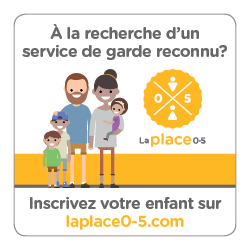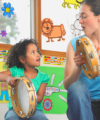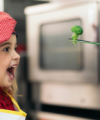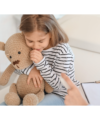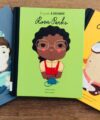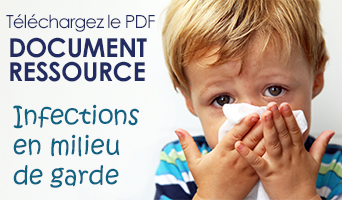When Toddlers bite, it is upsetting to all involved -- parents, caregivers and the children. Most toddlers who bite will stop after being corrected a few times. However, some continue to bite. Biting is quite common among young children. It happens for different reasons with different children and underdifferent circumstances The first step in learning to control it is to look at why it may be happening. WHY CHILDREN BITE EXPLORATION - Infants and toddlers learn by touching, smelling, hearing, and tasting. If you give an infant a toy, one of the first places it goes to is the mouth. Tasting or "mouthing" things is something that all children do. Children this age do not always understand the difference between gnawing on a toy and biting someone. TEETHING - Children begin teething around the ages of 4 to 7 months. Swelling gums can be tender and can cause a great deal of discomfort. Infants sometimes find relief from this discomfort by chewing on something. Sometimes the object they chomp on is a real person! Children this age do not truly understand the difference between chewing on a person or a toy. CAUSE AND EFFECT - Around the age of 12 months, infants become interested in finding out what happens when they do something. When they bang a spoon on the table, they discover that it makes a loud sound. When they drop a toy from their crib, they discover that it falls. They may also discover that when they bite someone, they get a loud scream of protest! ATTENTION - Older toddlers may sometimes bite to get attention. When children are in situations where they are not receiving enough positive attention and daily interaction, they often find a way to make others sit up and take notice. Being ignored is not fun. Biting is a quick way to become the center of attention - even if it is negative attention. IMITATION - Older toddlers love to imitate others. Watching others and trying to do what they do is a great way to learn things. Sometimes children see others bite and decide to try it out themselves. When an adult bites a child back in punishment, it generally does not stop the biting but teaches the child that biting is okay. INDEPENDENCE - Toddlers are trying so hard to be independent. "Mine" and "Me do it" are favorite words. Learning to do things independently, making choices, and needing control over a situation are part of growing up. Biting is a powerful way to control others. If you want a toy or want a playmate to leave you alone or move out of your way, it is a quick way to get what you want. FRUSTRATION - Young children experience a lot of frustration. Growing up is a real struggle. Drinking from a cup is great; yet nursing or sucking from a bottle is also wonderful. Sometimes it would be nice to remain a baby. Toddlers don't have good control over their bodies yet. A loving pat sometimes turns into a push. Toddlers cannot talk well. They have trouble asking for things or requesting help. They haven't learned yet how to play with others. At times, when they can't find words to express their feelings, they resort to hitting, pushing, or biting. STRESS - A child's world can be stressful, too. A lack of daily routine, interesting things to do, or adult interaction is stressful situations for children. Children also experience stressful events like death, divorce, or a move to a new home. Biting is one way to express feelings and relieve tension. You turn around to pick up a few stray toys - and it happens. Erin lets out a piercing scream. You rush over and there's the tell-tale sign - red teeth marks on Erin's arm. Biting is one of the most difficult behaviors to deal with in young children. Biting is very similar to hitting, but it is much more dangerous. Young children have more power in their jaw muscles than in their arms, so the damage is more severe. And it can happen in an instant, even when you are standing right there! Biting is quite common among toddlers and is a very normal reaction for this age group. Every biting incident is taken very seriously, and taken care of, observed, discussed and followed according to the situation. 😉



